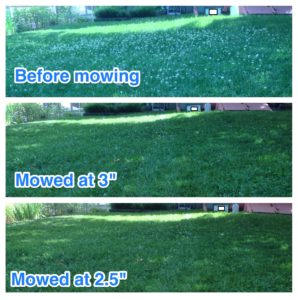Spring is here, by date if not by weather, and people are thinking about their lawns.
I’m here to show you why you should plant clover.
There’s a pretty long and interesting history of lawns that I won’t go into except to say that clover used to be part of lawn seed mixes for its nitrogen-fixing, drought resistance and other properties. Once people started using dicot herbicides on the lawn like 2,4-D, clover would get killed off, so it was no longer included in the seed mixes.
Clover offers all sorts of benefits to your lawn, including:
- Stays green during drought,
- Stores nitrogen, taken from the air rather than fertilizers,
- Is durable, which is great if you’ve got kids, pets or other traffic,
- Helps crowd out weeds, and more.
Now I know that some of you are screaming “BEES! THE FLOWERS BRING BEES!” I’ve got news for ‘ya, if you mow the lawn, you won’t get bees, and if you don’t mow the lawn, then you probably don’t need to worry about bees under your feet, do you?
We generally keep the grass mowed between 3-4″ in an effort to crowd out weeds and avoid any need to water the lawn. For the most part, cutting to this height means no white clover flowers.
Sometimes we do get clover flowers and, on occasion, we see bees on the flowers, but not often and not many. Mostly they’re attracted to the other flowers we’ve got going on (ornamentals, tomatoes, squash, etc.)
As you can see in the photo above, cut at 3”, the flowers are almost all gone. By 2.5”, they’re non-existent. Please keep in mind that the flowers still visible in the photos may be cut, as the area wasn’t cleared after each pass.

